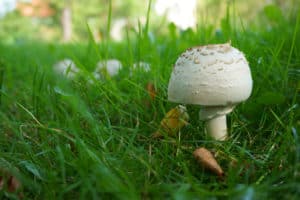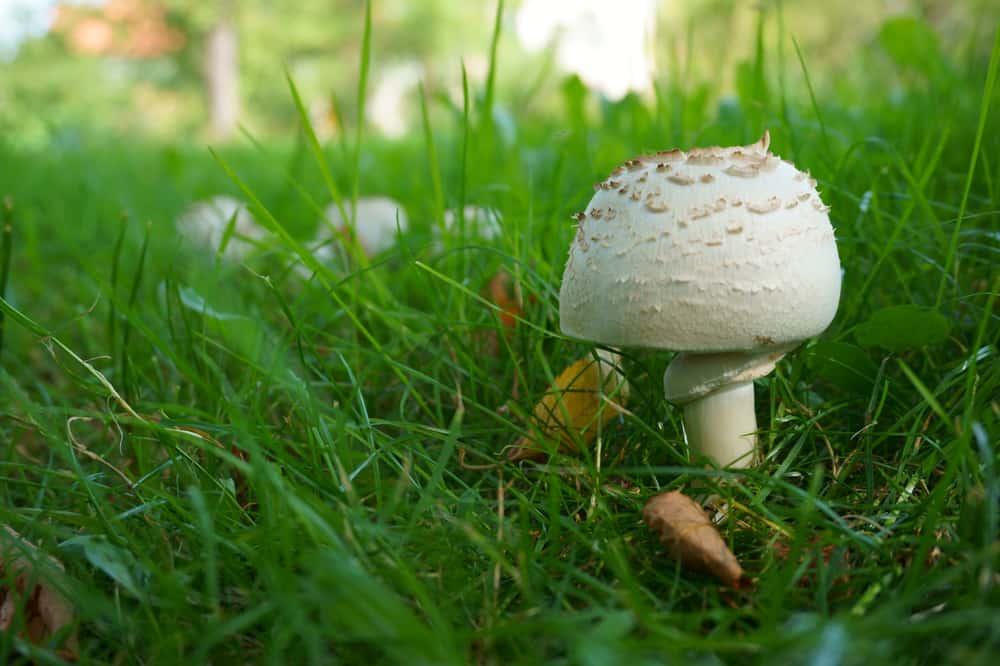
In today’s digital era, where information is readily available at the touch of a button, there’s no excuse to be in the dark about mushroom growth. These delicious ‘chameleons of the vast food world’ are the epitome of healthy; low in calories, loaded with antioxidants, vitamins, and minerals, and fat-free.
Additionally, they also maintain healthy brain function. With that being said, this guide will walk you through the process of growing mushrooms. We’ll also answer one of the most commonly asked questions, ‘what do mushrooms eat?’
How Do Mushrooms Grow?
Rather than seeds, mushrooms grow from tiny spores that are invisible to the naked eye. Instead of soil, these spores depend on wood chips, sawdust, straw, or grain for nourishment. A mix of spores and nutrient sources is popularly known as spawn. It enhances the growth of the mycelium. These are tiny, white, thread-like bodies.
Before any semblance of a mushroom pierces through the soil, the mycelium grows first. While the spawn could grow mushrooms, you’ll get a better mushroom harvest when the spawn is applied to a growing medium.
Depending on the mushroom species, the spawn could compost with a blend of cocoa seed hulls, straw, and corncobs. It may also be straw, wood chips, cardboard, or logs.
Where to Grow Mushrooms
Mushroom varieties thrive in humid, dark, and cool growing environments. When you’re growing them from the comfort of your home, your basement could work. However, a spot under your kitchen sink would also be perfect.
Before you kick off the process of growing mushrooms, test your spot by assessing the temperature to ensure it falls between 55°F and 60°F, as many mushroom varieties would thrive best within this range and away from drafts and direct heat.
Nevertheless, the Enoki species flourish in cooler temperatures of up to 45°F. Winter is the best time to take on a mushroom growth project as most basements become overly warm when summer rolls around, making them unsuitable.
While a cultivated mushroom can tolerate some light, the spot you choose should be mostly dark or have low lighting. If you opt to grow your mushrooms in a basement, ensure they are in a closet with no disturbance.
It’s worth noting that some species thrive outdoors on logs or in the prepared ground, which is a lengthier process that could take anywhere between 6 months and three years compared to a controlled indoor environment.
Types of Mushrooms to Grow
While all mushroom species grow in the wild, most can be grown at home. One of the perks that come with growing your preferred species is the much-needed peace of mind that stems from knowing you won’t pick a poisonous mushroom that can be detrimental to your health or, worse, fatal.
We’ve rounded up the types of mushrooms you can grow at home, with each having its unique growing needs. For instance, white button mushrooms must be grown on compost manure, oyster mushrooms on straw, and Shiitake on wood.
- Oyster
- Shiitake
- Cremini
- Maitake
- Portobello
- Enoki
What Do Mushrooms Eat?

As a type of fungi, mushrooms such as Saprophyte consume animal tissues and dead plants. Nevertheless, parasitic mushrooms can consume living things, including animals and trees. By metabolizing organic matter, they acquire their nutrition while supplying the earth with rich humus.
How Frequently Do Mushrooms Eat?
Mushrooms are ravenous feeders. For animals and humans, they must deal with their stomachs that aid in alerting them when to eat. When their bodies are still developing, they eat more to grow into adulthood. Nonetheless, that’s usually up to thrice daily. Mushrooms don’t eat like animals and humans, which means their ability to spread when there’s plenty of food is limitless.
Contrarily, given that plants lack stomachs, they generate sugars from the combination of solar energy and water via a process known as photosynthesis. Therefore, plants eat each time an artificial full-spectrum light or when the sun touches their leaves. Nevertheless, mushrooms don’t utilize this system.
Provided that they’re active, they don’t stop eating. When the cold months roll around, a wealth of fungal spores become inactive, eating little to nothing for months until warmer weather. However, some mushroom species flourish in extreme conditions and eat year-round.
The fungi don’t form fruiting bodies without at least two hours of sunlight every day, but they only require moisture and organic material to survive.
How Do Mushrooms Obtain Their Food?
There are two common types of mushrooms.
Saprophytes
These are the most frequent and feed on dead animal and plant matter.
Parasitic
These can feed on animals, trees, and other living organisms.
Anywhere living plants and organisms occupy space, fungal spores are lurking, waiting to take advantage. Most mushrooms use dead pieces of carcasses and plants to create a home. It serves as a layer over the earth that’s constantly growing and changing to spread and find food.
You might have noticed the presence of more mushrooms in forested regions. Forests are heavily packed with materials such as fallen logs, dead plants and animals, or tree leaves that make up the ideal substrate for fungi to thrive.
How Do Mushrooms Feed?
Mushrooms are only one part of the fungi that consume dead organic materials. While they don’t resemble fungi, mushrooms are the ‘fungus’ equivalent of a piece of fruit or a beautiful flower. Fungal spores grow on organic matter, spreading out and eating for a while before they produce a mushroom.
Contrary to animals and humans, fungi lack stomachs and mouths. The hyphae release digestive enzymes into the substrates where they thrive. Resultantly, they can break down the matter and absorb nutrients. It’s this process that leads to decomposition, whereby something is broken down into tiny pieces.
Plants and fungi nearby then feed on the bio-available smaller pieces. Nutrients partly consist of animal tissue and plant fibers. All living things rely on nutrients to flourish, build defenses, and keep their cells functioning optimally.
In turn, when living things die, those resources are no longer useful. Fungal digestive juices turn dead matter into consumable foodstuffs. The process differs from cooking and eating your food. Human digestive juices also break down the material for the nutrients to be bio-available.
Although mushrooms don’t excrete waste like human beings and animals, the unneeded substrate slowly turns into nutrient-loaded humus. It’s a no-brainer that animal and human waste serves a similar purpose known as manure.

Do Mushrooms Eat Grass?
In a nutshell, yes! However, contrary to what you may think, they’re not destructive to your lawn. While a ring of mushrooms in your backyard is seemingly out of place, they can be beneficial. Lawns are packed with dead organic materials like dead bugs and cut grass.
It’s the feast for fungi. Mushrooms are perfect for the grass as they’ll break down the materials and convert them to soil nutrients. Furthermore, given that fungi have extensive underground roots, they also aid in holding topsoil together, curbing erosion.
Final Thoughts
Like plants, mushrooms eat without using a mouth. Fungi help break down dead organic matter. Without decomposers such as mushrooms, Earth would be littered with carcasses and dead plant matter from the first thing that ever lived and died. Every inch of land would comprise metals covered in dead matter that never decomposed, rock, and silicates. The world we live in today would not be as it is.




